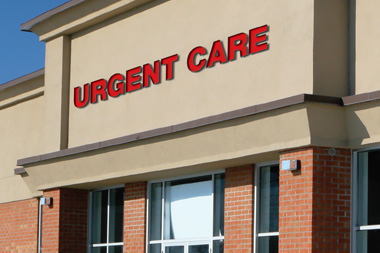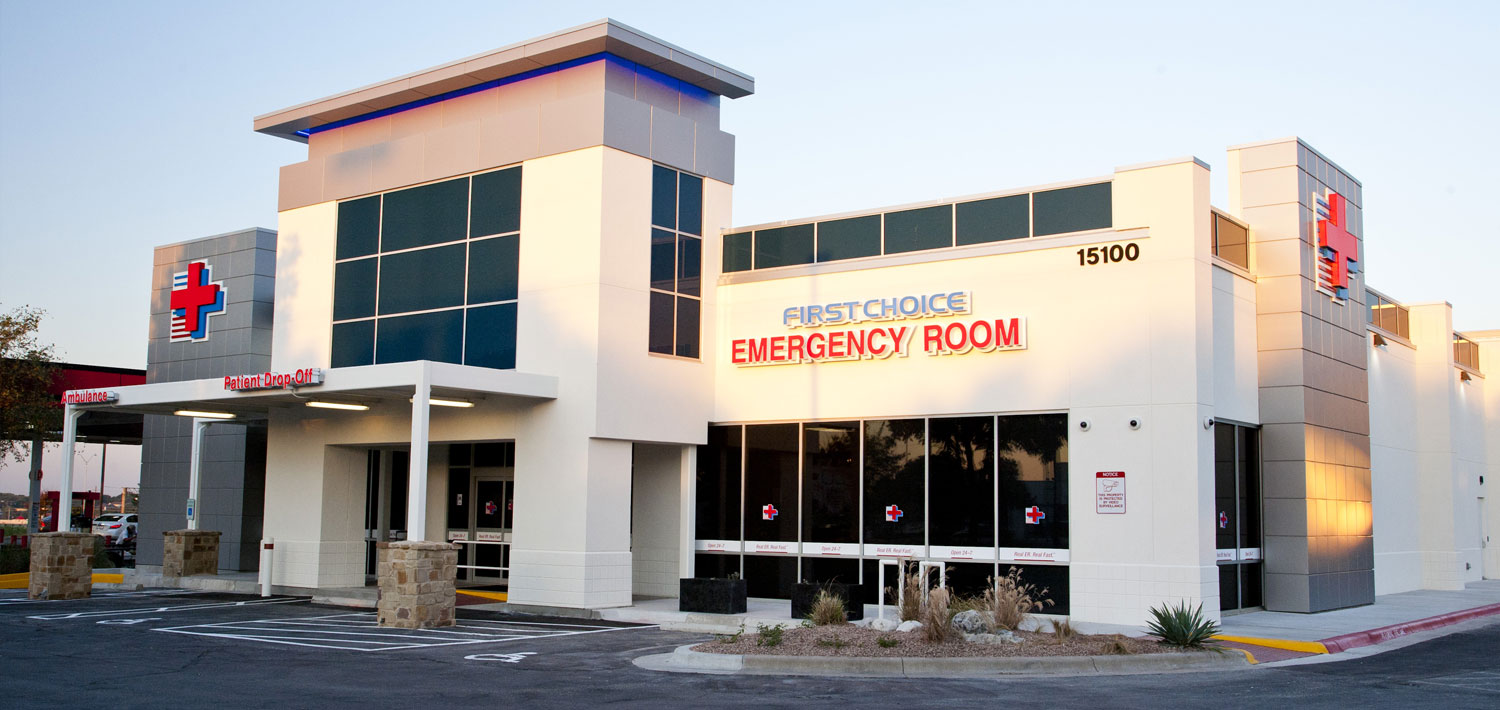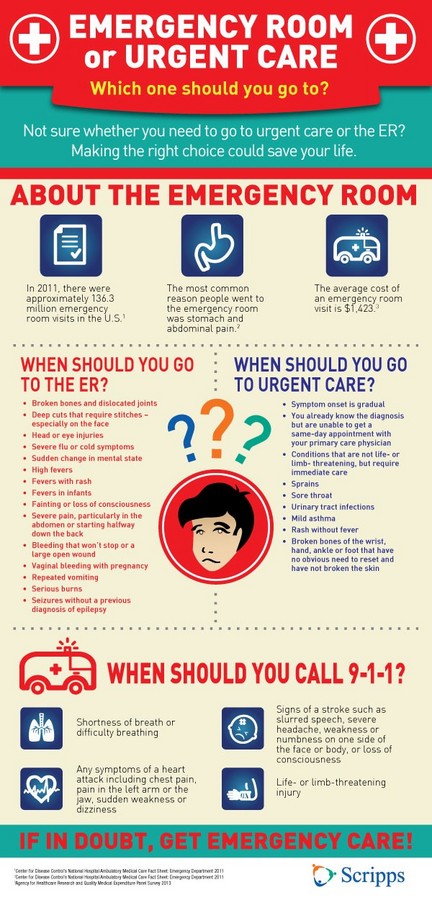As we’ve discussed in our six prior Understanding Your Insurance installments, a lot of staying on top of your healthcare is educating yourself on your plan. Also, making proper decisions about which providers to seek for your care is key. But what happens in the event of an emergency? There may not be time for a lot of decision making. Not to mention, there seems to be either a free-standing ER or Urgent Care on every corner. Do they all provide the same services? Do they all cost the same? In this installment, we will take a deeper look into the emergency healthcare environment.
What Constitutes an Emergency?
Before we examine the various emergency medicine institutions, it’s important to be mindful of what constitutes an emergency. While many medical issues can seem scary, they may not require emergency care.
If you have any of the following, you should head to the nearest ER as soon as possible:
- Severe chest pain or difficulty breathing

- Compound fracture (bone protrudes through skin)
- Convulsions, seizures or loss of consciousness
- Fever in newborn (less than 3 months old)
- Heavy, uncontrollable bleeding
- Deep knife wounds or gunshot wounds
- Moderate to severe burns
- Poisoning
- Serious head, neck or back injury
- Pregnancy-related problems
- Severe abdominal pain
- (Signs of) Heart attack (i.e.. chest pain lasting longer than two minutes)
- (Signs of) Stroke (e.g. loss of vision, sudden numbness, weakness, slurred speech, or confusion)
- Suicidal or homicidal feelings
If none of these conditions apply, your best bet is to try to get into your Primary Care Physician (PCP). If you can’t get into your PCP (e.g. it’s the weekend, you’re on vacation), the next best place to go is to Urgent Care.
Why Urgent Care?
 If you are suffering from a condition that doesn’t seem life threatening (e.g. possible broken bone, sore throat, fever, rash, vomiting, etc.), but you also can’t wait for a PCP appointment, then Urgent Care is your best bet. Most healthcare plans usually have lower copays for Urgent Care. And Urgent Care costs tend to be less than those at an emergency facility. However, it’s always best to consult your insurance plan. One way Urgent Cares keep costs down is by employing more mid-level care providers than emergency departments. These are known as Nurse Practitioners and Physician Assistants. There are always board certified physicians on staff to oversee the Urgent Care facility, but the likelihood of you seeing a mid-level provider for a non-emergent case is pretty high. Again, this is a good thing. These providers are highly trained and can diagnose conditions and prescribe medications, but their services are generally not as expensive as a physician’s.
If you are suffering from a condition that doesn’t seem life threatening (e.g. possible broken bone, sore throat, fever, rash, vomiting, etc.), but you also can’t wait for a PCP appointment, then Urgent Care is your best bet. Most healthcare plans usually have lower copays for Urgent Care. And Urgent Care costs tend to be less than those at an emergency facility. However, it’s always best to consult your insurance plan. One way Urgent Cares keep costs down is by employing more mid-level care providers than emergency departments. These are known as Nurse Practitioners and Physician Assistants. There are always board certified physicians on staff to oversee the Urgent Care facility, but the likelihood of you seeing a mid-level provider for a non-emergent case is pretty high. Again, this is a good thing. These providers are highly trained and can diagnose conditions and prescribe medications, but their services are generally not as expensive as a physician’s.
The following estimated costs were prepared by Medica Choice Network for nine of the most common reasons people visit the ER. They were determined by calculating the average number on claims submitted in 2010 to the Medica Choice Network, a system of more than 4,000 medical offices, clinics and hospitals across four Midwestern states:

As you can see, the cost difference between an Urgent Care and ER for non-emergent symptoms is pretty staggering.
Emergency Situations Call for Emergency Rooms
If you do find yourself in search of an emergency room, there are now choices there too. In Colorado we have 2 forms of emergency care: traditional hospital emergency rooms and free-standing emergency rooms.
Free Standing ERs
 We’re sure you’ve seen these popping up in most shopping areas and major intersections. There may even be one near your neighborhood. These facilities are sort of getting a bad rap because many people have made the unfortunate mistake of thinking these emergency rooms are an Urgent Care and have then received a very high medical bill for a non-emergent condition (see above chart). While these ERs may seem convenient, they are actual emergency rooms and therefore generally charge more due to the fact they have more physicians on staff and higher level testing equipment and services available. These facilities should only be utilized for actual emergencies, same as a hospital ER, and you can generally expect much higher costs for services rendered. Again, your best bet is to do your research. If you happen to pull up to a building thinking it is an Urgent Care, but the building has “Emergency” on the sign, you should probably google another location if your condition is not life threatening.
We’re sure you’ve seen these popping up in most shopping areas and major intersections. There may even be one near your neighborhood. These facilities are sort of getting a bad rap because many people have made the unfortunate mistake of thinking these emergency rooms are an Urgent Care and have then received a very high medical bill for a non-emergent condition (see above chart). While these ERs may seem convenient, they are actual emergency rooms and therefore generally charge more due to the fact they have more physicians on staff and higher level testing equipment and services available. These facilities should only be utilized for actual emergencies, same as a hospital ER, and you can generally expect much higher costs for services rendered. Again, your best bet is to do your research. If you happen to pull up to a building thinking it is an Urgent Care, but the building has “Emergency” on the sign, you should probably google another location if your condition is not life threatening.
Traditional Hospital ERs
These are always attached to a major hospital and should again, only be utilized in one of the emergency situations listed above. You can generally expect high costs due to a higher level staff and access to more testing. The best thing you can do is to ensure that all of your area ERs are within your healthcare’s network.
Here is a wonderful infographic by Scripps that helps to visually break this down:

Hopefully, this helps you better understand the world of emergency medicine to enable you to make better decisions should you ever have the unfortunate situation arise where you need to decide between an Urgent Care or an Emergency Room. Next month we will dispel some healthcare myths and misconceptions.
Category: Uncategorized


